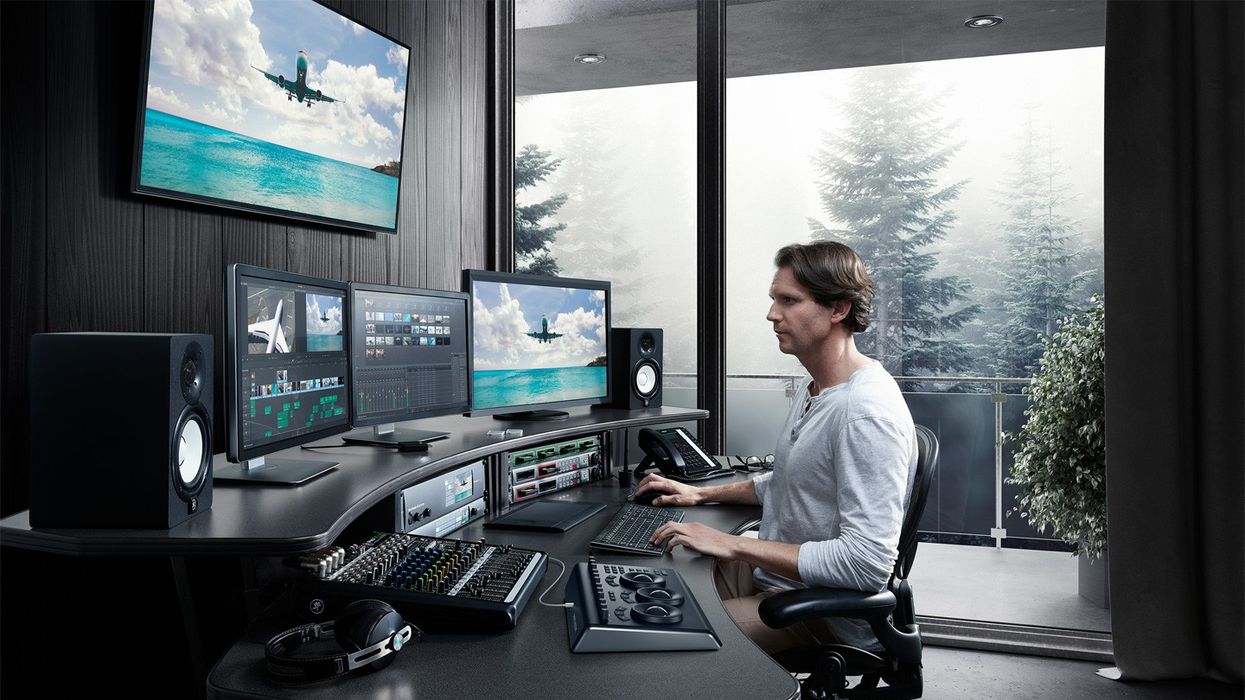Resolve 14 is Out of Beta With a Big Push into Sound and Editing
Blackmagic DaVinci Resolve, long the industry standard color platform, pushes harder into sound and editing with Version 14.

First announced back at NAB, Resolve has been in public beta throughout the summer, with the last several revisions (starting with at least version 6 in August) being exceptionally stable. As revisions have heated up in the last weeks, with versions 8 and 9 coming fast on the heels of each other, it was likely that the stable release would happen soon, especially with IBC coming up, and now here we are.
Resolve 14 is the biggest push yet from Blackmagic to expand Resolve out from being just a color grading platform and into both editing and sound, offering a single shop for post-production finishing that requires no round trip between the platforms. While Resolve offered editing tools starting with version 11 and expanded them greatly with 12 and 12.5, it has always suffered from a playback lag in the edit room that kept many editors away. Most editing platforms simply play back the file with no transformation unless you apply an effect, whereas Resolve historically processed the footage through some sort of engine, which makes it exceptionally powerful for color grading but led to that frustrating lag.
Resolve 14 has focused not only on improvements in the editing interface, but has also greatly improved playback and performance. We worked on several projects in Resolve 14 beta this summer, and despite some small beta software hiccups, there really is a vast improvement in playback and it worked as an editing platform for client-driven projects even in beta. Never once was editor, director or producer frustrated by the experience of editing in 14 until we did a final playback in a 12.5 room at the end of the process and returned to the noticeable lag.

The other huge improvement is the integration of Fairlight Audio, though that will likely be slower to find foothold in the industry. Color and sound both traditionally require a lot of hardware for manipulation and monitoring. Resolve already had color, so moving on the edit world was easy, because hardware isn't as entrenched and it works with Avid servers and output systems. After all, Blackmagic makes the Avid DNxIO boxes. Conversely, moving on sound—where ProTools boards and 5.1 monitoring environments are huge investments—will be slower.
However, just because Fairlight is built into 14 doesn't mean you have to use it. The roundtrip process between Resolve and Protools has been improved, allowing a production to edit and color in Resolve, do sound and mix in Protools, and bring it back together for mastering in Resolve. Smaller houses without large ProTools investments should explore Fairlight and see if it can handle their audio needs, saving them a round trip step which can be a huge time saver, especially if picture changes need to happen after "lock."

Additional tools are also included for colorists as well, justifying the exceptionally reasonable price of $299 for Studio. Most interesting is face refinement, which identifies faces in frame and pre-draws windows on them, saving colorists a tremendous amount of time executing a repetitive task that is part of practically every color grade.
Resolve is available, for free, right now at Blackmagic's site, with the studio upgrade of $299 bringing with it noise correction, shared networked projects to rival Avid, and more plugins for saving time in the suite.











